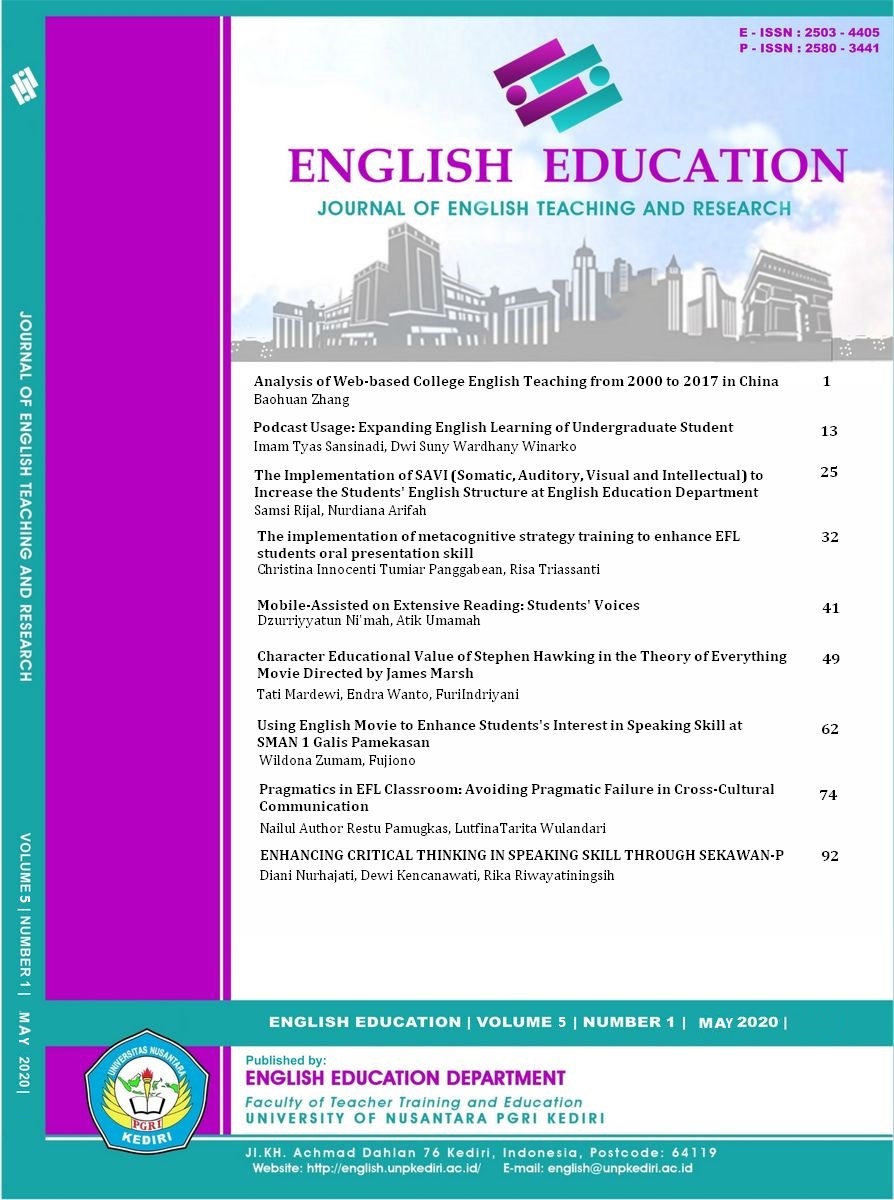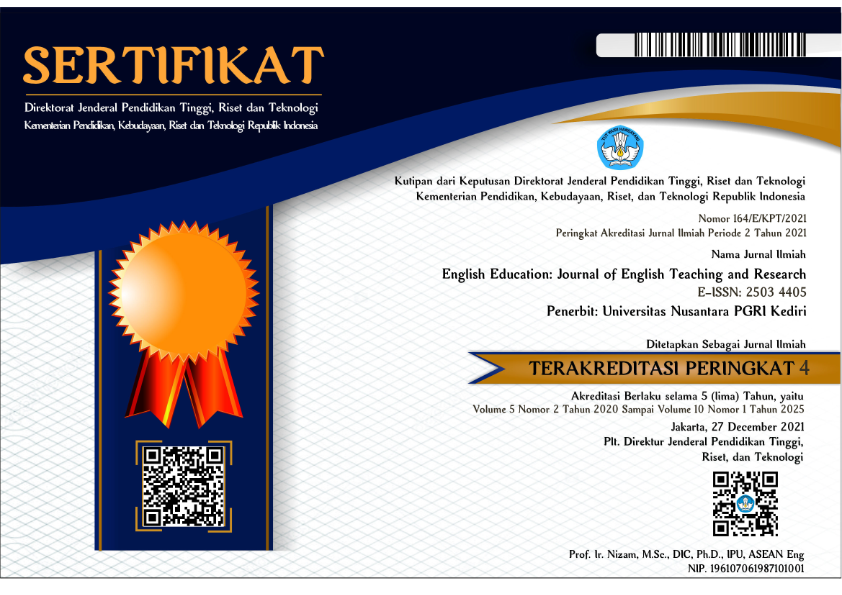ENHANCING CRITICAL THINKING IN SPEAKING SKILL THROUGH SEKAWAN-P
DOI:
https://doi.org/10.29407/jetar.v5i1.14370Keywords:
Critical Thinking, Sekawan-P, Teaching ModelAbstract
There are some problems in teaching English faced the high school many teachers and students. Based on the observation in one of good senior high schools, it was found out some weaknesses in teaching English. The teaching process relied on the exercises in the student book. The teaching activity was more teacher center. The teacher never made development on the materials, which were more challenging. As a result, the students were not trained to have critical thinking. This could be seen when the teacher asked questions, they answered using short answer, without any elaboration. This influences the ability of their critical thinking. Actually, graduates of high schools should be equipped with skills to face the Industrial era 4.0. The skills are Critical Thinking, Creativity, Collaboration, and Communication. All teachers can train those skills when they teach, including English teachers. Therefore, this research aims at describing how the teaching model Sekawan-P can enhance the students’ critical thinking in speaking skill. The study was a Lesson Study (LS) program between an English teacher of SMAN 1 Kediri and three lecturers of Nusantara PGRI Kediri University. They worked together to solve the problems mentioned above using this teaching model. They revised the existing lesson plan and materials, made improvement, and revised the teaching plan. The results show that after they applied Sekawan-P, the critical thinking of the students developed. It can be seen on how they delivered their arguments in speaking skill.
Downloads
References
Brookhart, S. M. (2010). How To Assess Higher-Order Thinking Skills In Your Classroom. ASCD
Ellis, E. (2004). What’s the Big Deal with Graphic Organizers?. (online). Available at
http://www.Graphic_organizers.Org.
Jenicek, M.(2006).A Physician’s Self-Paced Guide to Critical Thinking. Chicago: AMA Press.
Lewis, C. (2002). Lesson Study: A handbook of Teacher-Led Instructional Change. Philadelphia.PA: Research for Better School.
Nunan. D. (2004). Practical English Language Teaching. New York: Prentice-Hall.
Nurhajati, D. (2016). Project-Based Learning Used to Develop Supplementary Materials for Writing Skill. ASIA EFL Journal, Indonesian Conference Edition December 2016. https://www.asian-efl-journal.com/9928/research-editions/2016/12/aej-tesol-indonesia-conference-volume-2/#squelch-taas-tab-content-0-1
Patton, M. (2012). Work that matters: The teachers’ Guide to Project-Based Learning. London: Paul Hamlyn Foundation.
Romanowski, M.H. and Nasser, R. (2012), “How Critical Thinking is taught in Qatari independentschools’ social studies classrooms: teachers’ perspectives”, International Journal of Education,Vol. 4 No. 1.https://www.researchgate.net/publication/298833146_Improving_critical_thinking_skills_through_the_integration_of_problem_based_learning_and_group_investigation
Wang-Iverson P., and Yoshida, M. (2015). Building Our Understanding of Lesson Study. Philadelphia, PA: Research for Better Schools.
Zahroh, N. and Wardani. H.K. (2011). Using Lesson Study to Improve English language Teaching and Learning. In Cahyani, H. and Cahyono, B.Y. (Eds) Best Practices in the Teaching of English. (pp.457-480). Malang: State University of Malang Press.
Zubaidah, Siti. 2018 Mengenal 4C: Learning and Innovation untukMenghadapi Era RevolusiIndustri 4.0. Article in “2nd Science Education National Conference”.UniversitasTrunojoyo, Bangkalan, Madura. Pp. 1-18.
Downloads
Published
Issue
Section
License
Authors who publish with this journal agree to the following terms:
- Copyright on any article is retained by the author(s).
- The author grants the journal, the right of first publication with the work simultaneously licensed under a Creative Commons Attribution License that allows others to share the work with an acknowledgment of the work’s authorship and initial publication in this journal.
- Authors are able to enter into separate, additional contractual arrangements for the non-exclusive distribution of the journal’s published version of the work (e.g., post it to an institutional repository or publish it in a book), with an acknowledgment of its initial publication in this journal.
- Authors are permitted and encouraged to post their work online (e.g., in institutional repositories or on their website) prior to and during the submission process, as it can lead to productive exchanges, as well as earlier and greater citation of published work.
- The article and any associated published material is distributed under the Creative Commons Attribution-ShareAlike 4.0 International License








 Article template
Article template



